By taking gradual steps to integrate energy efficiency, solar and storage, charging for electric vehicles, and managing when energy is used, our homes can run on clean energy and be microcosms of what large utilities achieve.
Stephen Smith | October 26, 2023 | Clean Energy Generation, Clean Transportation, Energy Efficiency, Solar, Tennessee, UtilitiesAs part of the Clean Energy Generation webinar series, our Executive Director, Dr. Stephen A. Smith, shared a video tour of clean energy modifications and upgrades he and his family have made to their Knoxville home over the years, which reduces the family’s energy usage and saves money on monthly utility bills.
Video Tour of the Smith Family’s Clean Energy Home
My family purchased our home in Knoxville in 2006 with a plan to live here temporarily and ultimately to build a new home from scratch to utilize clean green technology as much as possible. In 2008, we switched gears – we decided that the better approach was to improve the existing home. This has been a multi-step process with lots of planning and forethought in order to keep it within our budget and use smart sequencing. Today we are very happy with where we stand, and we continue to be pleased with the performance of all of the additions and modifications.
I also want to acknowledge that we are fortunate to have some resources that others may not. This is why we are breaking down the steps and pieces to show there are things people can do within any budget. These steps can be built upon, especially now with incentives and rebates from the Inflation Reduction Act (IRA).
Additionally, there are always questions about whether these are smart investments that bring value to the homeowner. We all have different things we value more than others. I can say with certainty that I have never regretted any of our investments outlined here. Our home is more comfortable, healthier, and smarter, and allows us to feel we are part of the Clean Energy Generation working for solutions. Furthermore, there is clear evidence that many of these investments not only pay back with monthly dividends from savings but also increase the overall value of your home if and when you may sell it. Would I have put solar panels on a house that I was not going to live in for more than five years? Maybe not. But as we watch the ravages of climate disruption, the bottom line for my family has been that our home is not only more resilient, it is also an attempt to model a new future that works with utilities to find solutions. From a values perspective, this is priceless.
Start with Energy Efficiency to Stretch Every Electron
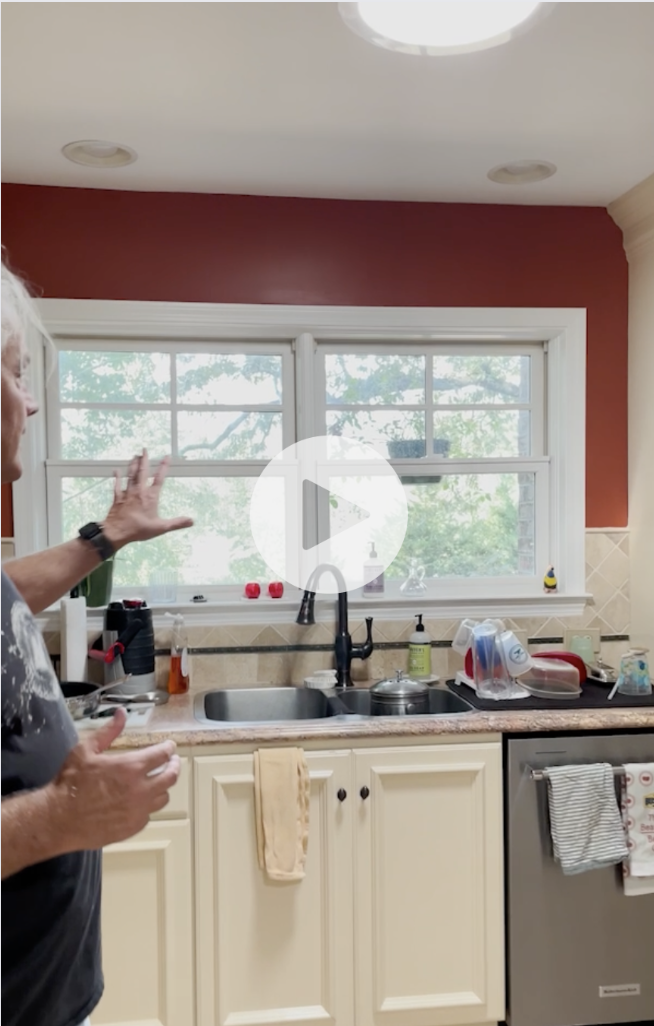 We began the upgrade process intentionally, spending time planning and creating a logical course of action. The natural starting point was to install extensive energy efficiency improvements: first tightening up the home by reducing air leaks, changing to efficient lighting, replacing the windows and insulation, and switching to electric appliances.
We began the upgrade process intentionally, spending time planning and creating a logical course of action. The natural starting point was to install extensive energy efficiency improvements: first tightening up the home by reducing air leaks, changing to efficient lighting, replacing the windows and insulation, and switching to electric appliances.
Efficiency is the foundation that a clean home is built upon – a home that stretches every electron as far as possible makes the best use of energy, whether it relies on traditional utility-generated power or  sexier components like solar and storage. Air sealing, lighting, windows, and insulation are first to come to mind when considering efficiency upgrades. The next lowest hanging fruits are HVAC and electric kitchen appliances, so we added a geothermal heat pump and induction cooktop in the kitchen.
sexier components like solar and storage. Air sealing, lighting, windows, and insulation are first to come to mind when considering efficiency upgrades. The next lowest hanging fruits are HVAC and electric kitchen appliances, so we added a geothermal heat pump and induction cooktop in the kitchen.
Beyond these more obvious efficiency improvements, we added nine Solatube solar tubes to our interior spaces. These clever lighting alternatives bring natural daylight into interior rooms, reducing lighting needs, AND can function as traditional light fixtures at night. The Schüco solar hot water heater we added is another efficiency gain: water is pre-heated before it goes into the electric hot water heater, so rather than starting with 50-60 degree water, the system begins with 100+ degree water, depending on the season, meaning the electrical element in the hot water heater doesn’t have to run as much for us to have ready hot water.
1st Phase Solar: Grid-Tied
Once we established an energy-efficient foundation, we were ready for our first solar photovoltaic (PV) installation: a 7.13 kW Sharp rooftop system comprised of thirty-six 198-Watt solar modules installed by GES Solar. At the time,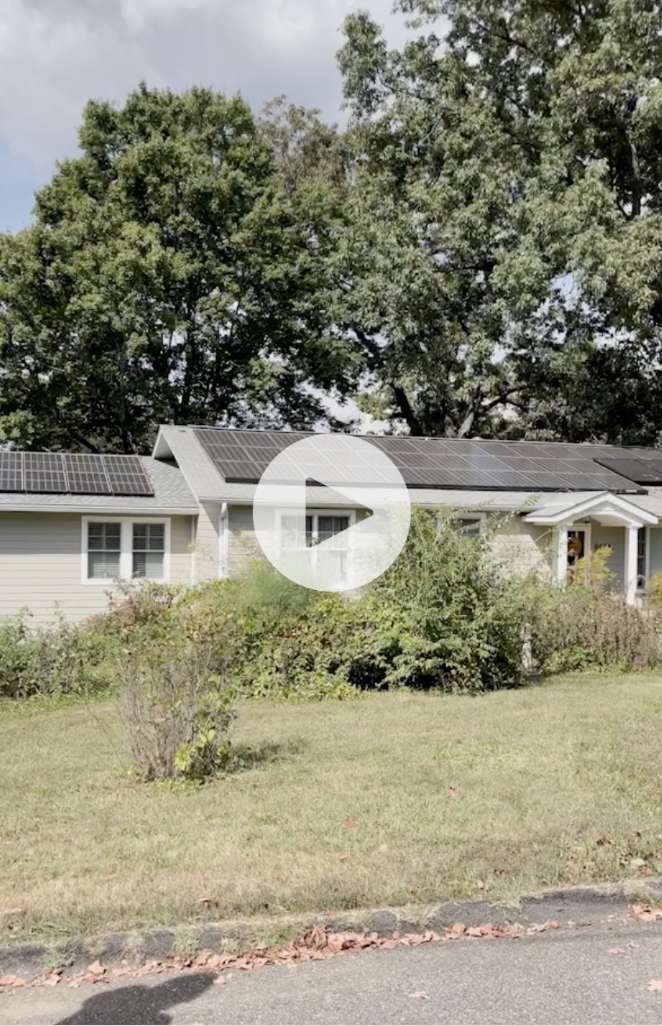 Sharp was making these panels in Memphis TN. This system pretty much offset the vast majority of our household energy use, especially during spring and fall when sun is plentiful and HVAC needs are less.
Sharp was making these panels in Memphis TN. This system pretty much offset the vast majority of our household energy use, especially during spring and fall when sun is plentiful and HVAC needs are less.
At that time (2009-2010), TVA was effectively running a solar buy-back program that we were eligible to take advantage of called Generation Partners Program, which is basically like a feed-in-tariff (FIT) program where the homeowner is bound to sell all electricity produced to the utility, 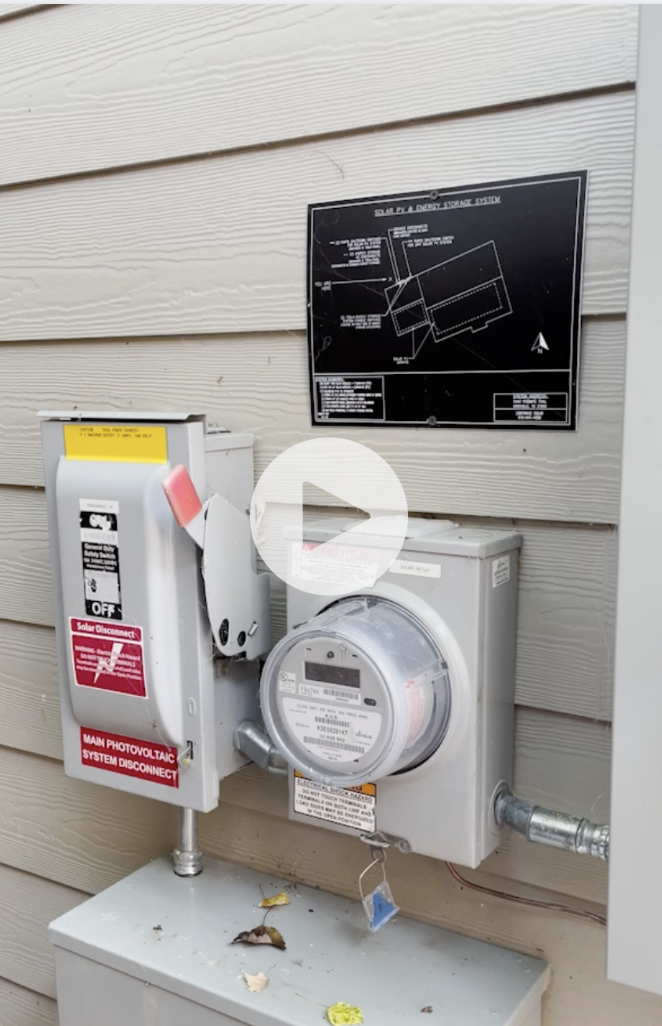 and the utility is bound to buy it. Generation Partners required a 20-year contract: for the first 10 years TVA paid us a premium or 12 cents above retail (~21-22 cents/kwh); now that we are in the second 10 years, TVA pays us the retail rate. When the sun shines, the 7.13 kW system generates electricity, measured with a dedicated meter. A separate meter is a traditional meter measuring how much power is being used/pulled from the grid. The program has been discontinued, but the 7.13 kW system at my home remains ‘grandfathered in’ for about six more years, meaning that this system remains contractually grid-tied, offsetting the cost of any electricity we pull from the grid first, and then generating income with whatever we generate above that.
and the utility is bound to buy it. Generation Partners required a 20-year contract: for the first 10 years TVA paid us a premium or 12 cents above retail (~21-22 cents/kwh); now that we are in the second 10 years, TVA pays us the retail rate. When the sun shines, the 7.13 kW system generates electricity, measured with a dedicated meter. A separate meter is a traditional meter measuring how much power is being used/pulled from the grid. The program has been discontinued, but the 7.13 kW system at my home remains ‘grandfathered in’ for about six more years, meaning that this system remains contractually grid-tied, offsetting the cost of any electricity we pull from the grid first, and then generating income with whatever we generate above that.
2nd Phase Solar: “Behind the Meter”
With my family expanding in 2019-2020, we put an addition on the home, which created additional south-facing roof space for more solar panels. This system is smaller – 3.96 kW – and is “behind the meter.” Power from this 3.96 kW system, which is comprised of twelve 330-Watt REC solar modules and installed by Lightwave Solar, meets household load first. While the original panels remain interconnected with the grid, these new panels run directly to two 13.5 kWh Tesla powerwalls (also installed by Lightwave) – giving us a total of 27 kWh of storage at our home. If powerwalls fill up, we can plug in one of our electric cars and take all the extra power.
Adding Storage Helps Move Us Toward Net-Zero
These compact powerwalls really are one of the keys to making the system self-sufficient. If the 3.96 kW system provides enough for our home needs at a given time, we are net-zero – requiring no energy from the grid at all. If we need less than the panels generate, the surplus runs to the powerwalls and can be stored for future use.
This obviously saves us money; it also saves us worry and inconvenience during outages. Think about this: a ‘typical’ American household uses ~1000 kWh of electricity per month. This is (very) roughly averaged at around 30 kWh/day. The two powerwalls total 27 kW, so if TVA loses power, and my powerwalls are full, I can power the house for about a day without being replenished with sunshine. If the sun is out, there’s no limit to how long we could run the house normally without grid power. Since we installed the new system and the powerwalls, power has gone out in our area at least five times, mostly for short durations of minutes. But a couple of notable times, our part of Knoxville has been without power longer, at least once for many hours. We have yet to be without power since installing the storage system.
Time of Use: Mutually Beneficial Incentives for Homeowners & Utilities
We are now part of a pilot program with Knoxville Utilities Board (or KUB – our local provider, which purchases power from TVA and sells to Knoxville customers). Through the pilot, KUB is attempting to use “time of use” incentives to manage demand. Under this pilot, KUB institutes “peak” service times to correspond with the time it costs them (KUB) more to buy electricity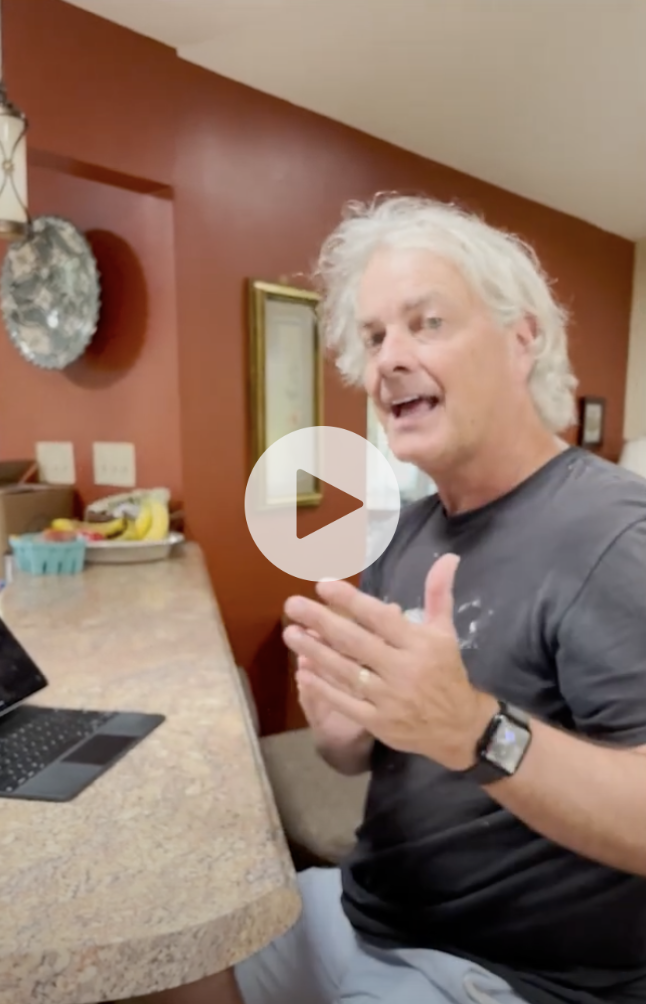 from TVA – they charge residential customers significantly more for energy used during “on peak” times, and less for energy used during “off-peak” each day. On peak in winter is 5 am-11 am, and in summer 2 pm-8 pm. Customers who opt in to this program purchase electricity used during the 18 off-peak hours of each day at 2 cents below standard rate. To incentivize customers to really roll back energy use during peak hours, KUB then charges almost twice the standard rate (21 cents or so) during peak hours. My household has been participating for a little over a year and we have saved about $400.
from TVA – they charge residential customers significantly more for energy used during “on peak” times, and less for energy used during “off-peak” each day. On peak in winter is 5 am-11 am, and in summer 2 pm-8 pm. Customers who opt in to this program purchase electricity used during the 18 off-peak hours of each day at 2 cents below standard rate. To incentivize customers to really roll back energy use during peak hours, KUB then charges almost twice the standard rate (21 cents or so) during peak hours. My household has been participating for a little over a year and we have saved about $400.
Time of use also benefits the utility immensely: Massive central station plants are notoriously inflexible and are constantly responding to the energy loads of industry, businesses, and homeowners. Peak load is different in different geographies, especially when utilities often cover widespread areas. These peaks and valleys make it more expensive and less efficient to provide reliable power, and utilities use “peakers” – frequently fossil gas plants, that they have to turn on and off to meet fluctuating demand. Utilizing smart technology to manipulate demand times (say, by charging an electric car overnight or using self-generated solar energy during high peak times) flattens the load curve, making the entire system more efficient. An integrated home that has its own ability to generate power and store power can – with time of use rates – become a helpful participant in the utility’s load issues.
The Evolving Role of the Electric Car
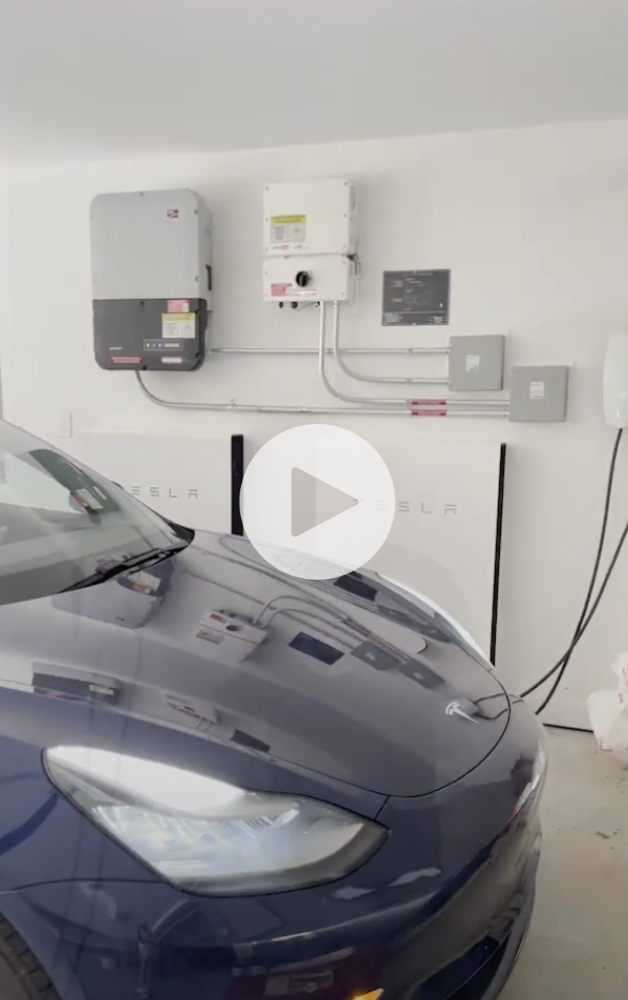 When we leased our first electric car, a Nissan LEAF, we had only our grid-tied 7.13 kW rooftop system, and charging the car at home is primarily what drove our consumption out of the range of net zero, making it a challenge for our attempt to maintain a net zero home. Today, we have two Teslas in my household, each with a 75 kWh battery. These two cars can store 150 kWh, almost 6x the storage of my two Tesla powerwalls, without any additional upfront expense or need for storage space (you are going to have a car, right?). At the ‘typical’ household demand of ~1000 kWh of electricity per month or ~30 kWh / day, a car with a 75 kWh battery could power your home for two days. As technology advances and we move toward smart homes and vehicles with two-way power integration, electric cars will be an important component of a carbon-free lifestyle.
When we leased our first electric car, a Nissan LEAF, we had only our grid-tied 7.13 kW rooftop system, and charging the car at home is primarily what drove our consumption out of the range of net zero, making it a challenge for our attempt to maintain a net zero home. Today, we have two Teslas in my household, each with a 75 kWh battery. These two cars can store 150 kWh, almost 6x the storage of my two Tesla powerwalls, without any additional upfront expense or need for storage space (you are going to have a car, right?). At the ‘typical’ household demand of ~1000 kWh of electricity per month or ~30 kWh / day, a car with a 75 kWh battery could power your home for two days. As technology advances and we move toward smart homes and vehicles with two-way power integration, electric cars will be an important component of a carbon-free lifestyle.
Solar + Storage: An Effective Solution at the Micro & Macro Level
I like to think of all of these components as increasingly integrated – my home, storage, electric car, and solar panels are part of a single system giving me, the homeowner, maximum flexibility in managing my own reliability, environmental attributes, and, especially with time-of-use in place, my utility bill. Basically, this gives me the capacity to control my own energy destiny.
Solar + storage works on a micro level at my home. It can work on a macro level as well. I have said many times that I truly believe it is a crime to burn fossil fuels during the daytime when the sun shines on us. Now, with storage technologies and infrastructure increasing so rapidly, excess can be captured and dispatched at night or at peak times at the utility level as well.
Summary: Each Individual Step is Part of the Collective Solution
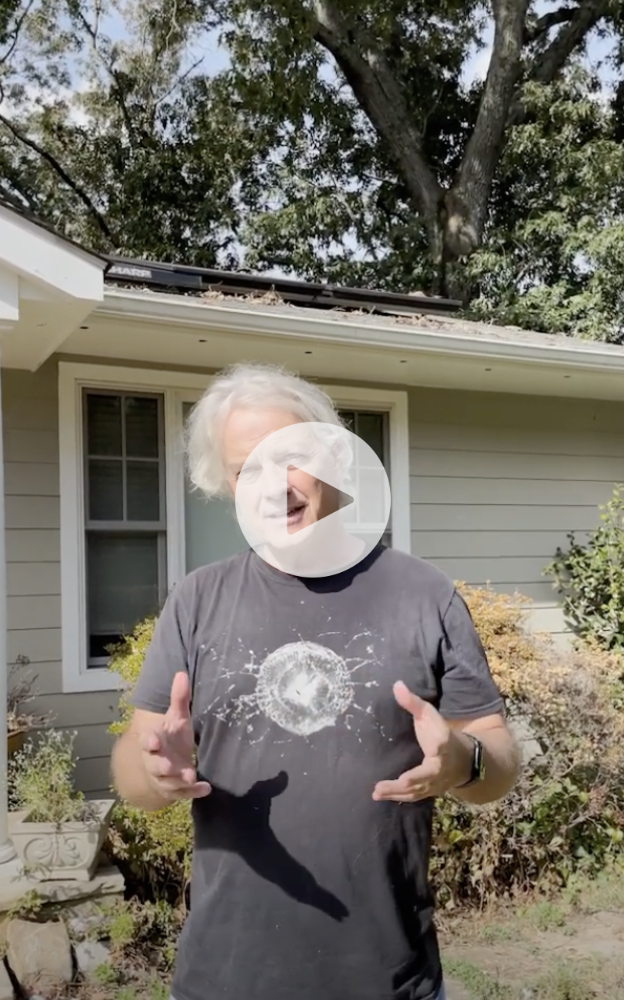 As part of the Clean Energy Generation, we’re all looking for ways to be part of the solution instead of part of the problem. But you don’t have to do everything that this house has incorporated – remember, we did everything step by step, not all at once. This blog and video are just opportunities to see how clean energy home technologies integrate. You can take each individual step as part of the solution, and those steps really matter – especially with energy efficiency, because the greenest electron is the electron we never use. Now that we’re starting to have access to more solar technology, electric vehicles, storage, and smart meters, and utilities are starting to offer time of use rates, it all integrates so that we can become part of the solution in a comprehensive, collective way. Take it step by step. Do the things that make sense that you can afford, starting with energy efficiency.
As part of the Clean Energy Generation, we’re all looking for ways to be part of the solution instead of part of the problem. But you don’t have to do everything that this house has incorporated – remember, we did everything step by step, not all at once. This blog and video are just opportunities to see how clean energy home technologies integrate. You can take each individual step as part of the solution, and those steps really matter – especially with energy efficiency, because the greenest electron is the electron we never use. Now that we’re starting to have access to more solar technology, electric vehicles, storage, and smart meters, and utilities are starting to offer time of use rates, it all integrates so that we can become part of the solution in a comprehensive, collective way. Take it step by step. Do the things that make sense that you can afford, starting with energy efficiency.
Watch the video in full here, or watch some older videos highlighting different components here:
The Clean Energy Generation is Embracing the Challenges & Opportunities of Our Time
Our generation stands at a defining fork in the road forward. The preferred path is what we are calling the “Clean Energy Generation.” As members of the Clean Energy Generation, we acknowledge the moment we are in by choosing action over despair. This Clean Energy Generation embraces both the challenges and opportunities of our time. And as plentiful the challenges are in today’s world, the opportunities are just as many, and growing by the day. Technology is developing at an exponentially rapid pace, and favorable policies that encourage and favor adoption and growth of clean energy resources have a multiplier effect.
It’s our generational challenge to confront climate disruption together, coming together to respond to the greatest challenge of our time.
By supporting favorable policies, and at the same time embracing the ways we can – as individuals and collectively – join the movement, we will help speed the transition and bring it to the scale on the timeline we so desperately need. Our homes can generate power when the sun is out and decrease demand on utilities to help keep our bills down, and at the same time help utilities lower their costs and demand on their equipment. Technology is available – today – to make our homes more efficient and reliable while moving away from our need for fossil fuels completely. And with policies driving prices down and technologies becoming more widely accessible, our homes can be microcosms of what our larger utility-based electric system needs to become.
Solar + storage, if scaled properly to the utility level, can offset the need for fossil fuels.
To create thriving communities, we must recognize the urgency of the moment and take decisive action together now. The Clean Energy Generation is choosing action over despair and gaining traction toward a healthier and more sustainable, enjoyable world than we’ve dared to imagine.
Make Your Next Step Your First Step
Do the things you can afford and feel good to you. Energy efficiency is the most important first step in upgrading any home, and efficiency improvements come in all shapes and sizes and price tags. Remember: “The greenest electron is the one we never use.”
Next, find out what your utility and state offer: does your utility offer time-of-use pricing? Is it better to sell back generated power or keep it at home? In many of our Southeastern states, unfortunately, utilities aren’t paying a good rate for power from rooftop residential systems, meaning that oftentimes solar+storage is probably the best option for homeowners here.
It starts with small steps – asking questions and joining together as neighbors, students, and friends to decide which specific climate actions could benefit our communities.